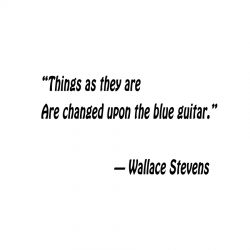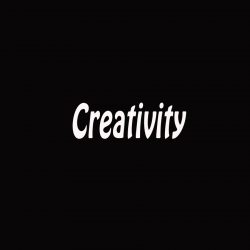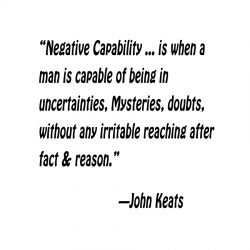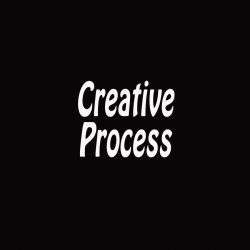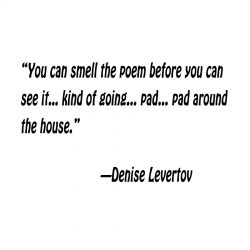BLBA Database of Quotations on Aesthetics, Creativity, and Creative Process—from the Artist’s Perspective
Please share your own good quotes by artists and we’ll put them in the database. See our Contact page to reach us.
The above quotes and a great many others can be found below listed alphabetically.
BLBA Quotation Database
ARISTOTLE (Philosopher, Son of Nicomachus)
“Poetry, therefore, is a more philosophical and a higher thing than history, in that poetry tends rather to express the universal.”— Aristotle, Section 9, The Poetics
BORGES (Jorge Luis Borges, fiction writer)
The great 20th century South American writer Jorge Luis Borges said that the young writer begins with the feeling that “he can make his emotions into poetry. He should begin, of course, by imitating the writers he likes. This is the way the writer becomes himself through losing himself—that strange way of double living, of living in reality as much as one can and at the same time living in that other reality, the one he has to create, the reality of his dreams.” — Borges, Jorge Luis. Borges on Writing. Ed. Norman Thomas diGiovanni, Daniel Halpern and Frank MacShane. New York: E.P. Dutton, 1973, p. 164.
BOWERMAN (David Bowerman, painter)
“In the 1980s, when I was first starting out, part of what the [inner] voice told me is that the artist makes the invisible visible. This was when I began to believe this was my role as an artist. I didn’t even connect that this meant my work had nothing to do with trying to recreate what you see with your eye. — From Briggs, JP and Gennette Nowak. “An Interview with David Bowerman.” Connecticut Review. Vol. XXXI No. 2 Fall 2009, p. 90.
BUDDHIST, HINDU
“Art is the form which conveys the formless.” — From Bush, John. Journey into Buddhism, Dharma River. Direct Pictures, 2005.
“An old Indian myth says that Brahma created the universe and all the beautiful snow-clad mountains, rivers, flowers, birds, and trees—even humans. Yet soon afterward, he was sitting on a chair, his head in his hands. His consort, Saraswati, asked him, “My lord—you created the whole beautiful Universe, populated with men of great valor and intellect who worship you—why are you so despondent?” Brahma replied, “Yes, all this is true, but the men whom I have created have no appreciation of the beauty of my creations and, without this, all their intellect means nothing.” Whereupon Sarawati reassured Brahma, “I will give mankind a gift called art.” From that moment on people developed an aesthetic sense, started responding to beauty, and saw the divine spark in all things.” — Ramachandran, V.S. The Tell-Tale Brain: A Neuroscientist’s Quest for What Makes Us Human. New York: W.W. Norton, 2011, p. 190.
CAPONIGRO (Paul Caponigro, photographer)
Photographer Paul Caponigro characterizes his own process of artistic abstraction as “leaving things out” and getting in touch with his feelings beyond labels, trying to match his emotion with the elements he needs to make the picture and render the unnamable quality he felt in the subject: “I have to shut up when a subject calls to me. I turn my camera in a direction and start looking and then I leave things out. Leaving things out is the beginning of composition… But to arrive at the composition, I reach into my feelings. I feel the distance between the picture edge and the subject, the interruption of the verticals. I am very quiet under the darkcloth. Very quiet, so that my emotions can inform.” — Caponigro, Paul. The Hidden Presence of Places. Rockland, Maine: Farnsworth Art Museum, 2011, p 14.
CATHER (Willa Cather, novelist)
“Whatever is felt upon the page without being specifically named there—that, one might say, is created. It is the inexplicable presence of the thing not named, the overtone divined by the ear but not heard by it, the verbal mood, the emotional aura of the face or the thing or the deed, that gives high quality to the novel or the drama, as well as to poetry itself. (Italics added). — Cather, Willa. “The Novel Démeublé.” In Not Under Forty. New York: Alfred A. Knopf, 1922, pp. 43-51.
“Art it seems to me, should simplify [abstract],” Willa Cather says. — Cather, Willa. “The Novel Démeublé.” In Not Under Forty. New York: Alfred A. Knopf, 1922, pp. 43-51.
CEZANNE (Paul Cezanne, painter)
Poet John Peal Bishop observed, “You can’t say Cezanne painted apples and a tablecloth and have said what Cezanne painted.”
CREATIVITY QUOTES FROM ACADEMICS
Frank Barron points out in the introduction to the anthology Creators on Creating, “not until the early nineteenth century, with the romantics, do we begin to get hints of self-awareness of the creative process.” Barron, Frank from Alfonso Montuori, Althea Barron, eds. Creators on Creating. New York: Jeremy P. Tarcher, 1997, pg. 7.
COLLINS (Mary Collins, writer)
Mary Collins, a poet and nonfiction writer, teaches creative nonfiction courses at Central Connecticut State University. She says, “All the prose we read may be in first person, but it’s invariably about humanity, not the author.”— Collins, Mary. “An Interview with Steward O’Nan.” Connecticut Review. Vol. XXVII No. 2. Fall 2006.
CUNNINGHAM (Merce Cunningham, dance choreographer)
“The dancer’s discipline, his daily rite, can be looked at in this way: to make it possible for the spirit to move through his limbs and to extend its manifestations into space, with all its freedom and necessity. I am no more philosophical than my legs, but from them I sense this fact: that they are infused with energy that can be released in movement (to appear to be motionless is its own kind of intoxicating movement)—that the shape the movement takes is beyond the fathoming of my mind’s analysis but clear to my eyes and rich to my imagination…. In other words, a man is a two-legged creature—more basically and more intimately—than he is anything else. And his legs speak more than they “know.” (Italics added) — From Cunningham, Merce. Qtd. In Alma Guillermoprieto. “Merce Cunningham & the Impossible.” New York Review of Books. 9 Feb. 2012, p 29.
FAULKNER (William Faulkner, novelist)
“[The artist] must teach himself that the basest of all things is to be afraid; and, teaching himself that, forget it forever, leaving no room in his workshop for anything but the old verities and truths of the heart, the old universal truths lacking which any story is ephemeral and doomed—love and honor and pity and pride and compassion and sacrifice. Until he does so he labors under a curse. He writes not of love but of lust, of defeats in which nobody loses anything of value, of victories without hope and, worst of all, without pity or compassion. His griefs grieve on no universal bones, leaving no scars. He writes not of the heart but of the glands.” — From Faulkner’s nobel prize speech.
FROMM (Eric Fromm, psychoanalyst)
“If we are fully aware of a tree at which we look…then we have a kind of experience which is the premise for painting the tree… In conceptual knowledge [our collection of labels] the tree we see has no individuality; it stands there only as an example of the genus [label] tree; it is only the representative of an abstraction. — From Fromm, Eric. “The Creative Attitude” in Creativity and Its Cultivation. New York: Harper & Row, 1959, p. 54-56.
FROST (Robert Frost, poet)
When asked about the meaning of one of his poems, Frost replied, “What do you want me to do, say it again in different and less good words?” Frost wrote in a letter, “You get more credit for thinking if you restate formulae or cite cases that fall in easily under formulae, but all the fun is outside: saying things that suggest formulae that won’t formulate—that almost but don’t quite formulate” (Italics added). — Raab, Lawrence. From Touchstone: American Poets on a Favorite Poem. Ed. Robert Pack and Jay Parini. Hanover: University Press of England, 1966. EN On “Mending Wall.”
FRY (Roger Fry, aesthetician)
The aesthetician Roger Fry, who had a close association with artists, including Virginia Woolf, observed that in order to arouse emotions about the thing not named the artist may use his powers of abstraction in ways that are “infinitely various according to the emotions he wishes to arouse. He may require for his purpose the most complete representation of a figure, he may be intensely realistic, provided that his presentment, in spite of its closeness to natural appearance, disengages clearly for us the appropriate emotional elements. Or he may give us the merest suggestion of natural forms, and rely almost entirely upon the force and intensity of the emotional elements involved in his presentment.— Fry, Roger. Vision and Design. Ed. J.B. Bullen. Mineola: Dover, 1981, p 26-7.
GARDNER (John Gardner, novelist)
“We need not be much distressed by the fact that as a rule painters have very little good to say of art historians and aestheticians, or that writers, even our best-educated writers, often express impatience with English professors. The critic’s work—that is, the English professor’s — is the analysis of what has already been written. It is his business to systematize what he reads and to present his discoveries in the way most likely to be beneficial to his students. If he’s good at his job, he does this more or less dispassionately, objectively. He may be moved by a particular work, and may let his students know it, but though tears run down his cheeks, his purpose is to make structure and meaning crystal clear. This can lead—from the artist’s point of view—to two evils. First, the professor, and indeed his whole profession, may tend to choose not the best works of literature but those about which it is most possible to make subtle observations. Since the novels of Anthony Trollope contain almost no obscure allusions and no difficult symbolism, they are hard to teach. One stands in front of the class mouthing platitudes, snatching about for something interesting to say. On the other hand, one can dazzle one’s students almost endlessly, or encourage one’s students to dazzle one another, with talk about allusion and symbol in the work of ingenious but minor writers. Subtly and insidiously, standards become perverted. ‘Good’ as an aesthetic judgment comes to mean ‘tricky,’ ‘academic,’ ‘obscure’”. — Gardner, John. The Art of Fiction: Notes on Craft for Young Writers. New York: Vintage, 1985, p. 13.
GIACOMETTI (Alberto Giacometti, visual artist)
Cecil Nebel in his book, The Dark Side of Creativity, provides a glimpse of how difficult the task of articulating the individual vision actually is. Discussing the creative process of sculptor Alberto Giacometti, Nebel says that Giacometti “felt very strongly the need to dispel the influence of the vision imposed on us by habit or familiarity [the consensual schemas and Domain 2 artists’ schemas]; he considered it imperative to acquire a pristine, personal vision. But reaching such a vision is an extremely difficult enterprise.” Nebel notes, “and in his attempt to do so Giacometti undoubtedly destroyed many of his works. He told Andre Parinaud that, in his youth at least, the longer he looked at the model, the thicker became the screen between the model’s reality and himself [as the abstractions, categories and maps of the consensual schema and conventional artists’s schemas overtook him].” — Nebel, Cecile. The Dark Side of Creativity: Blocks, Unfinished Works and the Urge to Destroy. Troy, NY: Whitston Publishing, 1988, p 117.
GOMBRICH (E.H. Gombrich, aesthetician)
“Without some starting point, some initial schema, we could never get hold of the flux of experience. Without categories, we could not sort our impressions. Paradoxically, it has turned out that it matters relatively little what these first categories are. We can always adjust them according to need. Indeed, if the schema remains loose and flexible, such initial vagueness may prove not a hindrance but a help. An entirely fluid system would no longer serve its purpose; it could not register facts because it would lack pigeonholes. But how we arrange the first filing system is not very relevant.” — Gombrich. E.H. Art and Illusion: A Study in the Psychology of Pictoral Representation. The A.W. Mellon Lectures in the Fine Arts 1956 National Gallery of Art Washington. Bollingen Series XXXV. 5. Princeton: Princeton U. Press, 1960, p. 88.
HEMINGWAY (Ernest Hemingway, fiction writer)
“You see I’m trying in all my stories to get the feeling of the actual life across—not just to depict life—or criticize it—but to actually make it alive. So that when you have read something by me you actually experience the thing. You can’t do this without putting in the bad and the ugly as well as what is beautiful.” — Letter to Hemingway’s father dated March 20, 1925.
HOPPER (Edward Hopper, painter)
“What I wanted to do was paint sunlight on the side of a house.”
KANT (Immanuel Kant, one of the founders of the field of aesthetics)
“The schematism by which our understanding deals with the phenomenal world… is a skill so deeply hidden in the human soul that we shall hardly guess the secret trick that Nature here employs.”— From Kant’s Kritic der reinen Vernunft
KEATS (John Keats, poet)
“Several things dovetailed in my mind, & at once it struck me, what quality went to form a Man of Achievement especially in Literature & which Shakespeare possessed so enormously—I mean Negative Capability, that is when man is capable of being in uncertainties, Mysteries, doubts, without any irritable reaching after fact & reason.” — John Keats, letter to George and Thomas Keats, Dec. 28, 1817
LANGUAGE
“See that bird?” he says. “It’s a Spencer’s warbler.” (I knew he did not know the real name.) “Well, in Italian, it’s a Chutto Lapittida. In Portuguese, it’s a Bom da Peida. In Chinese it’s a Chung-long-ta, and in Japanese it’s a Katano Takeda. You can know the name of that bird in all the languages of the world, but when you’re finished, you’ll know absolutely nothing whatever about the bird. You’ll only know about humans in different places, and what they call the bird. So let’s look at the bird and see what it’s doing—that’s what counts!” — Physicist Richard Feynman about his father
“Words no matter whether they are vocalized and made into sounds or remain unspoken thoughts, can cast an almost hypnotic spell upon you. You easily lose yourself in them, become hypnotized into implicitly believing that when you have attached a word to something, you know what it is. The fact is: You don’t know what it is. You have only covered up the mystery with a label. Everything, a bird, a tree, even a simple stone, and certainly a human being, is ultimately unknowable. This is because it has unfathomable depth.” — Tolle, Eckhart. A New Earth. New York: Plume, 2005, p 25.
LEVERTOV (Denise Levertov, poet)
“You can smell the poem before you can see it. Like some animal… the smell of a bear; you know, you might begin to hear it kind of going… pad… pad around the house.” — From William Packard, ed. The Craft of Poetry. Garden City: Doubleday, 1974, p. 87.
MALARMÉ (Stéphane Malarmé, poet)
The French poet Stéphane Malarmé warned that “to name something is to destroy three quarters of the pleasure of poetry.” — From Golub, Marcia. I’d Rather Be Writing. Cincinnati: Writer’s Digest Books, 1999, p 160.
MONET (Claude Monet, painter)
Leonard Shlain reports, “Monet once said that he wished he had been born blind and later gained sight. That way he would be able to look at the world freed of the knowledge of what the objects were so the he could more fully appreciate their color” (112). — From Shlain, Leonard. Art & Physics, Parallel Visions in Space, Time & Light. New York: William Morrow, 1991, p 112.
MORRISON (Toni Morrison, novelist)
“The ability of writers to imagine what is not the self, to familiarize the strange and mystify the familiar, is the test of their power.”
NIN (Anaïs Nin, writer)
“The role of a writer is not to say what we all can say, but what we are unable to say.”
O’CONNOR (Flannery O’Connor, fiction writer)
“It’s well to remember than the serious fiction writer always writes about the whole world, no matter how limited his particular scene (77)…. If a writer is any good, what he makes will have its source in a realm much larger than that which his conscious mind can encompass and will always be a greater surprise to him than it can ever be to his readers (83) .
OLIVER (Mary Oliver, poet)
“Time is meaningless to a poem; if it is about something that pertains to the human condition, then it is about something of interest to the most modern man.” — From Oliver, Mary. Rules for the Dance. Boston: Houghton Mifflin, 1998, pg. 103.
“All successful poems… say something finally about our own lives, as well as the lives of their authors. Additionally, though so much in these poems is informal, the poems ‘work’; they slip from the instance and become the exemplum of the general; they glow with unmistakable universal meaning. Design, tone, passion—they are doing their good work here, too.” — From Oliver, Mary. A Poetry Handbook: A Prose Guide to Understanding and Writing Poetry. San Diego: Harvest, 1994, pg. 80.
Poet Mary Oliver asks, “Is a poem, which after all is only a literary construct within an imagined framework, a reasonable way to understand the world?” She answers, yes. “If it were not, poetry would have become an art starved in the mists of the past, mysterious and evocative but not intimate, not palpable, not thriving. And likewise the poems themselves—poems written long ago—would have become oddments, footnotes, amusing curiosities, rather than the passionate certainties that they are” — Oliver, Mary. Rules for the Dance. Boston: Houghton Mifflin, 1998, p.103.
O’NAN (Stewart O’Nan, novelist)
Novelist Stewart O’Nan said, “to me that is the ultimate experience as a reader—to be in the shoes of that other person and to feel close to them as they go through this time in their life. And to feel what they are feeling and to see what they are seeing. That, to me, is the magic of fiction,” — Collins, Marty. “An Interview with Steward O’Nan.” Connecticut Review. Vol. XXVII No. 2. Fall 2006, p 137.
PICASSO (Pablo Picasso, painter)
“A story is told about a meeting between Picasso and an American soldier stationed in France during the Second World War. The soldier took Picasso to task for not producing realistic pictures and, to illustrate the idea from which Picasso has fallen so far short, he pulled out a photograph of his fiancée back home saying: ‘This is what a picture should look like.’ Picasso looked carefully at the photograph and said: ‘Your girlfriend is rather small, isn’t she?’ (recounted in Solso 1996).
This story reminds us that all artworks, all pictorial representations, are abstractions.” — Zimmer, Robert. “Abstraction in art with implications for perception.” The Royal Society. Web. London. 18 May 2003, pg. 1285.
SCRIMGEOUR (James Scrimgeour, poet)
…the wind ruffles through the pages of my notebook,
ever-changes the appearance of my hair, always new
and delicious breath vibrates my chords, a mist
always riseth from every small cup of sea which
always runneth over, new music always anointing
the shore, ever singing in the shell shaped ear
—James Scrimgeour from “Why I Still Write Ocean Poems”
STEVENS (Wallace Stevens, poet)
They said, “You have a blue guitar,
You do not play things as they are.”
The man replied, “Things as they are
Are changed upon the blue guitar.”
—“The Man with the Blue Guitar,” Wallace Stevens
THARP (Twyla Tharp, dancer)
Choreographer Twyla Tharp argues that each artist has a creative hard-wiring or personality, a set of aesthetic preferences, that she calls the artist’s “DNA.”
I often think in terms of focal length, like that of a camera lens. All of us find comfort in seeing the world either from a great distance, at arms length, or in close-up. We don’t consciously make that choice. Our DNA does, and we generally don’t waver from it. Rare is the painter who is equally adept at miniatures and epic series, or the writer who is at home in both historical sagas and finely observed short stories…. Focal length doesn’t only apply to photographers. It applies to any artist.
The choreographer Jerome Robbins, whom I have worked with and admire, tended to see the world from a middle distance. The sweeping vision was not for him. Robbins’s point of view was right there on the stage….
It helps to know that Robbins grew up wanting to be a puppeteer, and I think this way of seeing the world—controlling events from behind the scenes or above, but not so distant that you cannot maintain contact with the action on stage—pervades almost everything he created. I doubt it was something he chose consciously, but in terms of creative DNA, it was a dominant strand in his work (37-38).
Tharp traces the DNA of her own individual vision back through her personal history. She describes her personal vision as involving intense “engagement” coupled with paradoxical “detachment.” Tharp’s impulse for this engaged detachment “comes naturally” to her, she says. In the rural community where she grew up,
I watched movies in a drive-in theater from a distance. I was even distanced from my twin brothers and my sister, who were all younger than I. They lived at one end of our house, I lived at the other so I could be free to maintain my rigorous [dance] practice schedule alone. You could even say I was detached from my world by my schedule…
Was it there from the start? Who’s to say, but my mother told me that at birth I was a noisy, ill-mannered baby in the hospital. The only way the nurses could shut me up was to put me out in the hallway by myself where could see everything going on around me [engagement and detachment] —Tharp, Twyla with Mark Reiter. The Creative Habit: Learn It and Use It for Life. New York: Simon & Schuster, 2003, p. 41.
Related: In Aesthetics and History, Bernard Berenson observes that “artistic personalities are equivalent to distinct modes of seeing.” — Berenson, Bernard. Aesthetics and History. New York: Doubleday, 1954.
Tharp says, “Creativity is an act of defiance. You’re challenging the status quo. You’re questioning accepted truths and principles. You’re asking three universal questions that mock conventional wisdom:
“Why do I have to obey the rules?”
“Why can’t I be different?”
“Why can’t I do it my way?”
These are the impulses that guild all creative people whether they admit it or not. Every act of creation is also an act of destruction or abandonment. Something has to be cast aside to make way for the new. — Tharp, Twyla with Mark Reiter. The Creative Habit: Learn It and Use It for Life. New York: Simon & Schuster, 2003, p. 133.
TOLSTOY (Leo Tolstoy, novelist)
“[Art is] a human activity consisting in this, that one man consciously, by means of certain external signs, hands on to others feelings he has lived through, and that other people are infected by these feelings and also experience them.”
There is a story, whose source I’ve been unable to find, about Tolstoy and Chekhov taking a walk one spring morning at Yasnaya Polyana, when they encountered a horse in the woods. Tolstoy started talking about the horse, graphically imagining what the animal would think about the clouds overhead, the umbrageous trees, the smell of the wet earth, the flowers, the sun. Chekhov, astonished, exclaimed that Tolstoy must have been a horse in an earlier life, because only a horse could know so completely what a horse would feel. Tolstoy responded, “No, but the day I came across my own inside, I came across everybody’s inside”. — Kaiser, Walter. “Empathy.” New York Review of Books. 25 Oct. 2012, p 12.
The chief peculiarity of this feeling [of ar] is that the perceiver merges with the artist to such a degree that it seems to him that the perceived object has been made, not by someone else, but by himself, and that everything expressed by the object is exactly what he has been wanting to express. The effect of the true work of art is to abolish in the consciousness of the perceiver the distinction between himself and the artist, and not only between himself and the artist, but also between himself and all who perceive the same work of art. It is this liberation of the person from his isolation from others, from his loneliness, this merging of the person with others, that constitutes the chief attractive force and property of art — Tolstoy, Leo. What is Art. Trans Richard Pevear and Larissa Volokhonsky: London: Penguin, 1995, p. 121.
WELTY (Eudora Welty, novelist)
“Indeed learning to write may be part of learning to read. For all I know, writing comes out of a superior devotion to reading. I feel sure that serious writing does come, must come, out of devotion to the thing itself, to fiction as an art. Both reading and writing are experiences—lifelong—in the course of which we who encounter words used in certain ways are persuaded by them to be brought mind and heart within the presence, the power of the imagination. This we find to be above all the power to reveal, with nothing barred — Welty, Eudora. On Writing. New York: Modern Library, 2002, pp 60-1.
WOOLF (Virginia Woolf, novelist)
“I read some history: it is suddenly all alive, branching forwards & backwards & connected with every kind of thing that seemed entirely remote before. I seem to feel Napoleon’s influence on our quiet evening in the garden for instance—I think I see for a moment how our minds are all threaded together—how any live mind today is made of the very same stuff as Plato’s & Euripides’. It is only a continuation & development of the same thing—It is this common mind that binds the whole world together; & all the world is mind… I feel as though I had grasped the central meaning of the world, & all these poets & historians & philosophers were only following out paths branching from that centre in which I stand.” — Quoted in Hussey, Mark. The Singing of the Real World: The Philosophy of Virginia Woolf’s Fiction. Columbus: Ohio State U. Press, 1986, p 131.
In her autobiographical essay “A Sketch of the Past” Woolf drew out the connection between this common, communal, universal mind and the “communal emotion” found in art, its “truth.” “I reach what I might call a philosophy; at any rate it is a constant idea of mind; that behind the cotton wool is hidden a pattern; that we—I mean all human beings—are connected with this; that the whole world is a work of art; that we are parts of the work of art. Hamlet or a Beethoven quartet is the truth about this vast mass that we call the world.” Woolf, Virginia. “A Sketch of the Past.” In Moments of Being. London: Triad Granada, 1982, p. 84.
In her essay “Mr. Bennett and Mrs. Brown,” Virginia Woolf delineates her own aesthetic principles by imagining an elderly woman sitting in the corner of a railway carriage and asking how different authors would characterize her: “Here is Mrs. Brown making someone begin almost automatically to write a novel about her…. Mrs. Brown’s character will strike you very differently according to the age and country in which you happen to be born. It would be easy enough to write three different versions of that incident in the train, an English, a French and a Russian. The English writer would make the old lady into a “character”; he would bring out her oddities and mannerisms; her buttons and wrinkles; her ribbons and warts. Her personality would dominate the book. A French writer would rub out all that; he would sacrifice the individual Mrs. Brown to give a more general view of human nature; to make a more abstract, proportioned, and harmonious whole. The Russian would pierce through the flesh; would reveal the soul—the soul alone, wandering out into the Waterloo Road, asking of life some tremendous question which would sound on and on in our ears after the book was finished.” — Woolf, Virginia. “Mr. Bennett and Mrs. Brown.” In The Captain’s Death Bed and Other Essays,” p. 102-3.
In “Mr. Bennett and Mrs. Brown,” Woolf points out that at the bottom of how a writer describes Mrs. Brown in the train car is the writer’s own aesthetic.“And then besides age and country there is the writer’s temperament to be considered. You see one thing in character, and I another. You say it means this, and I that. And when it comes to writing each makes a further selection on principles of his own. Thus Mrs. Brown can be treated in an infinite variety of ways, according to the age, country, and temperament of the writer.” (103).
ZIMMER (Robert Zimmer, aesthetician)
In a paper entitled “Abstraction in Art with Implications for Perception,” Robert Zimmer says “The artwork trains the viewer—it teaches him or her to see the ‘world afresh’… [and] artists’ perceptions of the world are informed by interpretations that are founded on schemata that they have learned from other art and modified.” — From Shlain, Leonard. Art & Physics, Parallel Visions in Space, Time & Light. New York: William Morrow, 1991.

